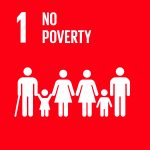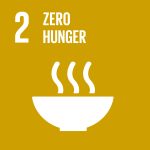Whakawhitinga Kōrero: Interdisciplinary education on the SDGs through place-based video production
Description
Institution
Organizations/areas of the university involved
This case study is staff-directed involving academics in the Schools of Design and Education, as well as participant staff from across the university. Funding for this case study was secured through a staff-run community that supports projects to foster the progression and innovation of teaching knowledge and quality.
Country
New Zealand
The learning and teaching resource, Whakawhitinga kōrero: Dialogues on sustainability, entails a series of videos that introduce the SDGs as they relate to local and global sustainability challenges, with a prioritisation on addressing the place-based context. A staff-driven collaborative production of Victoria University of Wellington in New Zealand, this resource was developed in response to the need to educate students in holistic concepts of sustainability while encompassing diverse perspectives and that reflect regionally and culturally-significant sustainability issues. The SDGs function as the framework for the videos where they reinforce the inherent interdisciplinarity and interconnectivity of broad-reaching sustainability concepts – from poverty to climate action, and from gender equality to the requisite partnership for the goals themselves. Each video centres on one-to-two specific SDGs, and these are addressed via dialogue between university staff, alumni, and local business and government representatives from across fields and sectors. The interjection of multidimensional viewpoints affords a balanced and democratic frame of reference in understanding the SDGs, while also offering an interpretation of the goals in a manner that more accurately mirrors the complexity and universality inherent in the SDG framework. Within the place-based context, students are introduced to cultural concepts that foster an understanding of sustainability as they relate to Māori (the indigenous people of New Zealand) values, including: mātauranga Māori (indigenous knowledge of native New Zealanders), kaitiakitanga (guardianship, care and conservation of nature, people, and ideas), and whanaungatanga (the close relationships that are formed through collective experiences, as evidenced through the interdisciplinary and collaborative learning and teaching environment). By inviting engagement through these lenses, students are given the opportunity to reflect on and identify with the wider challenges of sustainability through a more personalised, multi-faceted understanding. This interdisciplinary approach was selected as a means to offer an alternative to the disciplinary-specific curricula that, while offering valuable expertise within a given subject, entails a risk of educating students according to a limited understanding of sustainability. The intention of developing this learning and teaching resource is to enable education on the SDGs to be embedded into existing and new courses.
Results and impact measured or expected
The video resource, Whakawhitinga kōrero: Dialogues on sustainability, was developed to provide students with opportunities to learn reflexively through exposure to differing visions for sustainable development, including indigenous perspectives. Used in this way, the video dialogues support critical and creative thinking as well as dimensions of global competence. Following the application of this resource within a course curriculum, research was collated based on a focus group interview with five students and seven students’ written reflections. From these findings, the researchers measured the impact of the video dialogues on the students’ responses to complex sustainability issues with positive results. Critical success factors include increased engagement (attributed to local context and video format), critical thinking (attributed to application of associated reflective assessment journal task), and supported understandings of interconnectedness (attributed to video dialogue content and animated content). Since being trialled, the resource has been made accessible to the whole university community.

Connection with the SDG framework
The SDG framework forms the underlying architecture of the video series. Although the dialogues featured in Whakawhitinga kōrero: Dialogues on sustainability were recorded as organic conversations, each video is centred around one-to-two specific SDGs. Within the videos, the content delivered in the person-to-person dialogues are supplemented by an additional layer of information in the form of animated media. The animated content has three functions: to highlight the scope of the SDGs and their relevant targets as they relate to the SDG framework, to highlight the connectivity and interdependence that exists between SDGs, and to illustrate complex concepts as they are raised. As a comprehensive resource, the video series effectively introduces students to all seventeen of the SDGs as an amalgamated model for sustainable development while maintaining contextual relevance to Wellington, New Zealand.
Barriers and follow up
While the resource, Whakawhitinga kōrero: Dialogues on sustainability, has demonstrated its value as an educational tool, the development of the video series was not without its challenges. A staff-led initiative, the production of the videos was hindered by inadequate funding and time – both in regards to confirming and scheduling dialogue participants, as well as in production and post-production phases – which exceeded the anticipated expenditure. According to the evaluation of the video series, certain objectives were found lacking. For instance, while students expressed value in engaging with indigenous concepts as they relate to sustainability, the videos would benefit from greater inclusion of Māori perspectives. Likewise, the videos would benefit from a more equitable representation of race and gender amongst the dialogue participants. Based on these findings, a new design-led initiative is underway to develop a supplementary media resource that will specifically address the dimensions of sustainability through a Māori values lens.
Education 4 SDG funciona gracias a WordPress

